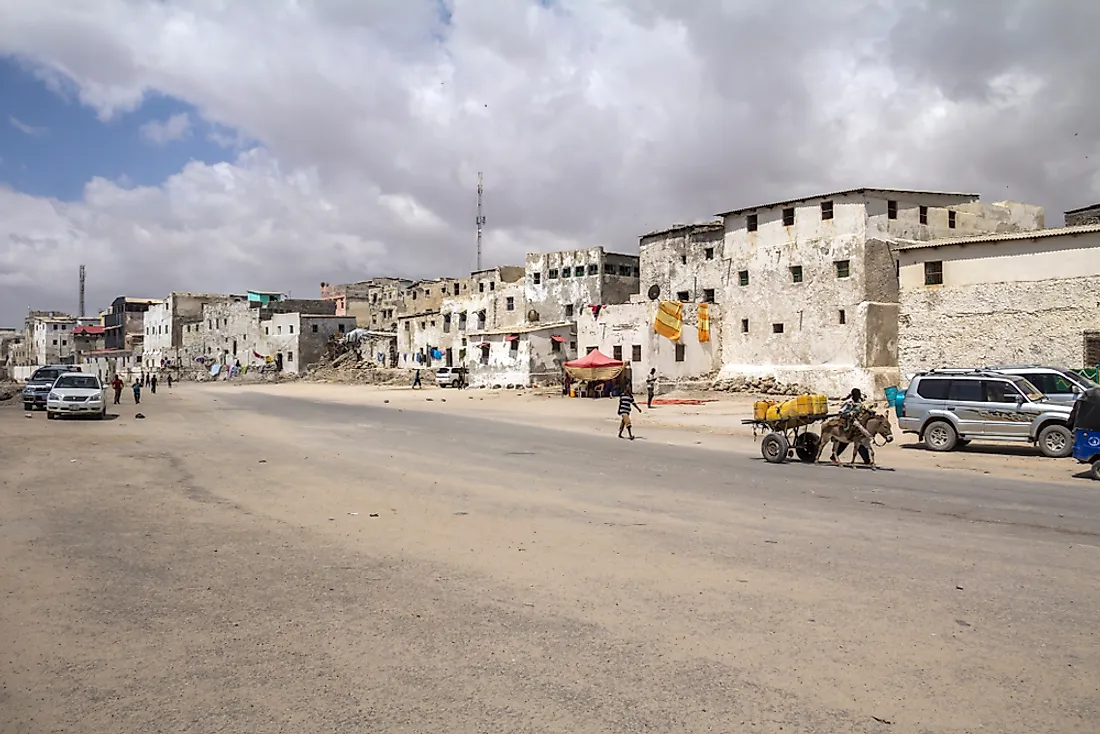Battle Of Mogadishu (1993 Operation Gothic Serpent)

5. Background
In December of 1992, Somalia, ravaged by famine, was also now deep into a state of civil war. The United Nations (UN), wanting to uphold peace in the region, conducted a joint operation to restore order to the nation. By May of 1993, peace had almost been achieved, and Mohamed Farrah Aidid, the leader of the largest warring faction, the Somali National Alliance, even proposed a disarmament conference. But all hopes for peace were dashed when, a month later, a group of Pakistani soldiers that were adjunct to the UN forces was ambushed and killed inside Mogadishu, the capital of Somalia. The UN Security Council, calling for the arrest of the perpetrators, enacted Resolution 837, but Aidid remained steadfast. In consequence, U.S.-led UN troops started to attack Aidid's strongholds in Mogadishu, Aidid's stronghold in the region.
4. MAKEUP OF THE FORCES
The UN forces consisted of Task Force Ranger, an elite assault force composed of members of the Army Rangers, Delta Force operatives, Air Force Pararescuemen and Combat Controllers, as well as 4 Navy SEALs. This task force had a total of 160 men, with 19 aircraft and 12 ground vehicles at its disposal. On the day following their entry, another task force was sent, this time composed of soldiers from the Malaysian Army, the Pakistani Army, and from the 10th Mountain Division of the U.S. Army. The second task force had around 100 ground vehicles, including Malaysian APC (Condor) and Pakistani tanks (M48s). On the Somali side, between 4,000 and 6,000 civilians-turned- militiamen faced them in support of the Somali National Alliance (SNA).
3. DESCRIPTION OF THE BATTLE
Task Force Ranger planned to capture Omar Salad Elmi, the Somali National Alliance Foreign Minister, and Mohamed Hassan Awale, Aidid's top political adviser. They executed the mission, and succeeded in securing the targets. However, a mob started to form around the target building, hampering the convoy's movements. The mob was composed of militiamen and non-military civilians alike. During the initial encounter, one of the U.S. Black Hawk helicopters being used as a support was shot down by a Rocket-Propelled Grenade (RPG). A few hours later, yet another Black Down was shot down by an RPG. The Task Force Ranger convoy tried to move to the location of the first site, suffering casualties from sniper fire and mob attacks along the way. Unable to reach the second crash site, two Delta operatives volunteered to be airdropped at the second crash site.
2. OUTCOMES
The convoy encountered heavy resistance on the entire way to the first crash site, pinning them there. The Somalis repeatedly tried to overrun U.S. positions, but were repelled by concurrent heavy weapons fire from the UN ground troops and strafing runs and rocket fire from their support helicopters. At the second crash site, the two Delta operatives, Gary Gordon and Randy Shughart, fought valiantly, but ended up losing their lives. Michael Durant, the pilot of the second crashed helicopter, ended up being beaten severely and apprehended by Aidid's forces. To break the deadlock, a multinational rescue convoy ended up being organized, composed of Pakistani, Malaysian, and U.S. troops. This rescue convoy, though suffering from casualties themselves, was successful in securing the Task Force Ranger convoy. All in all, the U.S. lost 18 soldiers’ lives, with 73 more wounded and 1 captured. The Malaysians lost 1 soldier and saw 7 of their own wounded, while the Pakistanis had 2 wounded and lost the life of 1 soldier. The Somalis, meanwhile, saw the loss of around 300 men’s lives, and an estimated 800 more were wounded.
1. Historical Significance and Legacy
The operation's outcomes drew a barrage of outcry from the American public. The graphic images from the war, especially of the scenes of Somali soldiers dragging American soldiers through the streets, proved too much for the American people to endure. It once again showed the American people that war is a bloody and messy affair. As a result, President Clinton decided to withdraw most U.S. forces from the region. The decision drew massive criticisms, especially after reports showed that Al-Qaeda forces had helped to train and assist Aidid's men. 13 years later, a new Somali Transitional Government, with Ethiopian backing, would take the Somali capital from the Islamic Courts Union that was holding it. In popular culture, the events in the Battle of Mogadishu were immortalized in Ridley Scott’s award-winning film, Black Hawk Down. It was also turned into a video game, Delta Force: Black Hawk Down, released by NovaLogic. A number of documentaries and books have also been created focusing on the incident.











